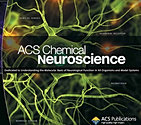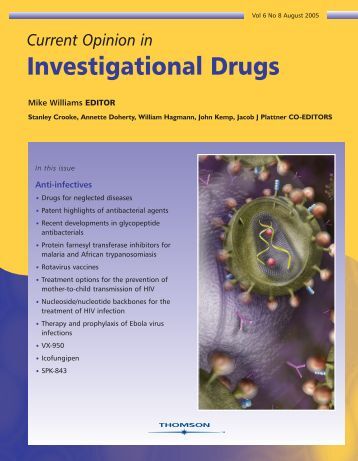
Tag Archives: Cannabinoids
MicroRNA-139 modulates Alzheimer's-associated pathogenesis in SAMP8 mice by targeting cannabinoid receptor type 2.
 “Alzheimer’s disease (AD) is a neurodegenerative disorder, and is the most common type of dementia in the elderly population. Growing evidence indicates that microRNAs (miRNAs) play a crucial role in neuroinflammation associated with AD progression. In this study, we analyzed the expression of microRNA-139 (miR-139) as well as the learning and memory function in AD. We observed that the miR-139 expression was significantly higher in the hippocampus of aged senescence accelerated mouse prone 8 (SAMP8) mice (2.92 ± 0.13) than in the control mice (1.49 ± 0.08). Likewise, the overexpression of miR-139 by means of hippocampal injection impaired the hippocampus-dependent learning and memory formation. In contrast, the downregulation of miR-139 in mice improved learning and memory function in the mice. The level of cannabinoid receptor type 2 (CB2), a potential target gene of miR-139, was inversely correlated with the miR-139 expression in primary hippocampal cells. Furthermore, we demonstrated that miR-139 inversely modulated the responses to proinflammatory stimuli. Together, our findings demonstrate that miR-139 exerts a pathogenic effect in AD by modulating CB2-meditated neuroinflammatory processes.”
https://www.ncbi.nlm.nih.gov/pubmed/28218780
“Alzheimer’s disease (AD) is a neurodegenerative disorder, and is the most common type of dementia in the elderly population. Growing evidence indicates that microRNAs (miRNAs) play a crucial role in neuroinflammation associated with AD progression. In this study, we analyzed the expression of microRNA-139 (miR-139) as well as the learning and memory function in AD. We observed that the miR-139 expression was significantly higher in the hippocampus of aged senescence accelerated mouse prone 8 (SAMP8) mice (2.92 ± 0.13) than in the control mice (1.49 ± 0.08). Likewise, the overexpression of miR-139 by means of hippocampal injection impaired the hippocampus-dependent learning and memory formation. In contrast, the downregulation of miR-139 in mice improved learning and memory function in the mice. The level of cannabinoid receptor type 2 (CB2), a potential target gene of miR-139, was inversely correlated with the miR-139 expression in primary hippocampal cells. Furthermore, we demonstrated that miR-139 inversely modulated the responses to proinflammatory stimuli. Together, our findings demonstrate that miR-139 exerts a pathogenic effect in AD by modulating CB2-meditated neuroinflammatory processes.”
https://www.ncbi.nlm.nih.gov/pubmed/28218780

 “Unprecedented developments in cannabinoid research within the past decade include discovery of a brain (CB1) and peripheral (CB2) receptor; endogenous ligands, anandamide, and 2-arachidonylglycerol; cannabinoid drug-induced partial and inverse agonism at CB1 receptors, antagonism of NMDA receptors and glutamate, and antioxidant activity; and preferential CB1 receptor localization in areas subserving spasticity, pain, abnormal involuntary movements, seizures, and amnesia. These endogenous structures and chemicals and mechanisms are potentially new pathophysiologic substrates, and targets for novel cannabinoid treatments, of several neurological disorders.”
“Unprecedented developments in cannabinoid research within the past decade include discovery of a brain (CB1) and peripheral (CB2) receptor; endogenous ligands, anandamide, and 2-arachidonylglycerol; cannabinoid drug-induced partial and inverse agonism at CB1 receptors, antagonism of NMDA receptors and glutamate, and antioxidant activity; and preferential CB1 receptor localization in areas subserving spasticity, pain, abnormal involuntary movements, seizures, and amnesia. These endogenous structures and chemicals and mechanisms are potentially new pathophysiologic substrates, and targets for novel cannabinoid treatments, of several neurological disorders.”  “Whereas the cannabis plant has a long history of medicinal use, it is only in recent years that a sufficient understanding of the pharmacology of the main plant constituents has allowed for a better understanding of the most rational therapeutic targets.
The distribution of cannabinoid receptors, both within the
“Whereas the cannabis plant has a long history of medicinal use, it is only in recent years that a sufficient understanding of the pharmacology of the main plant constituents has allowed for a better understanding of the most rational therapeutic targets.
The distribution of cannabinoid receptors, both within the  “1. Preparations from
“1. Preparations from  “Marijuana is a complex substance containing over 60 different forms of cannabinoids, the active ingredients. Cannabinoids are now known to have the capacity for neuromodulation, via direct, receptor-based mechanisms at numerous levels within the
“Marijuana is a complex substance containing over 60 different forms of cannabinoids, the active ingredients. Cannabinoids are now known to have the capacity for neuromodulation, via direct, receptor-based mechanisms at numerous levels within the